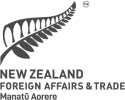Exports of items on the New Zealand Strategic Goods List, and exports subject to catch-all provisions are controlled. Imports and exports of certain chemicals are also controlled. Goods in transit/ transshipment are also controlled when re-exported.
Items on the New Zealand Strategic Goods List are controlled
The New Zealand Strategic Goods List includes controlled military and dual-use goods, software and technology.
The goods on the New Zealand List are derived from the control lists produced by the four export control regimes New Zealand belongs to - the Wassenaar Arrangement, the Australia Group, the Nuclear Suppliers Group and the Missile Technology Control Regime.
The New Zealand Strategic Goods List was last updated in November 2024. Find the list and an explanatory statement of the most recent changes below.
Exports covered by catch-all provisions are controlled
The catch-all controls (also known as 'military end -use provisions') control the export of items which are not listed in the New Zealand Strategic Goods List, but which may be intended for military (including police) use, or which may have military applications.
The catch-all controls are given effect through a Gazette notice that came into force in October 2020, which essentially “catches-all” those goods intended for a military or quasi-military end use that are not on the Strategic Goods List. The catch-all controls carry over the existing prohibition on the export of items with an end-use related to weapons of mass destruction and their means of delivery and establish a new prohibition on items for use in terrorist acts.
Exporters have a statutory obligation to inform the Secretary of Foreign Affairs and Trade, via the Export Controls team, if they are aware, or should reasonably be aware, that an export is intended for or may have any of the listed prohibited uses described in the Gazette Notice.
These provisions are important, as if left uncontrolled these exports might contribute to a conflict, or human rights violations, support repressive regimes, or increase the capability of a state which is challenging our security interests.
Certain chemicals are controlled
Importing and exporting certain chemicals is controlled. Read more about this in the Exporting (and Importing) Chemicals section of the website.
Re-exports of controlled goods are controlled
If your goods are of foreign origin you should check to see if they were controlled and required a permit to be exported to New Zealand.
As a general rule of thumb, if they required a permit to be exported here then they will need a New Zealand permit to be re-exported.
Even if you don’t have any documentation yourself, you should still check with the exporter that provided you with the goods (Note: not all goods come with an end-user certificate and hence you may be unaware if they were controlled by the original exporting country).
The original exporter may also have a determination from the export controls agency of that country that the goods are not controlled.
What else do I need to know?
- Export Controls can apply to research.
- There are a number of exemptions.
- We have prepared guidance on how to self assess whether your exports are subject to Export Controls.
- Even if your exports are not subject to Export Controls, they may be prohibited by United Nation Sanctions, or Russian Sanctions.

